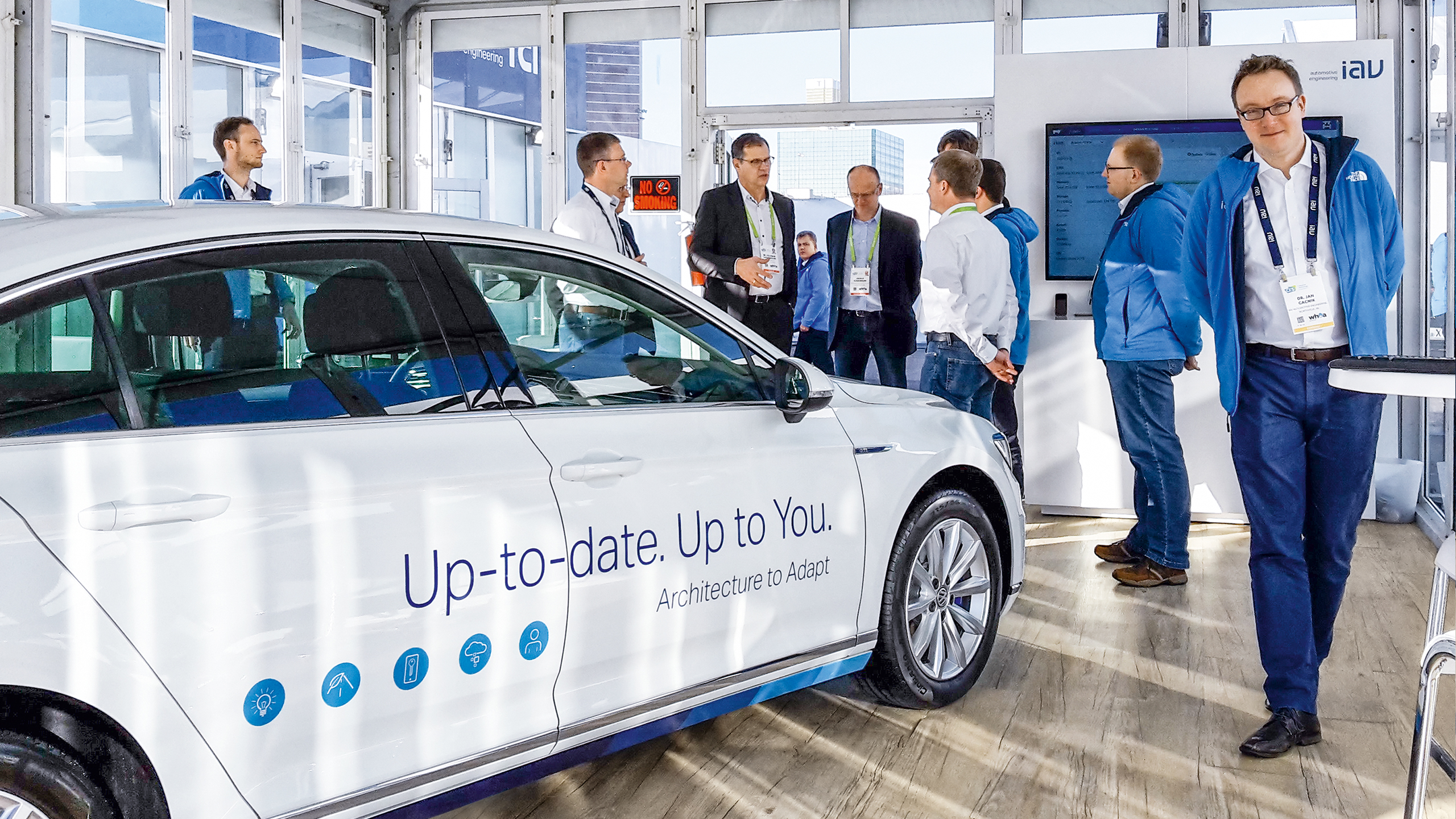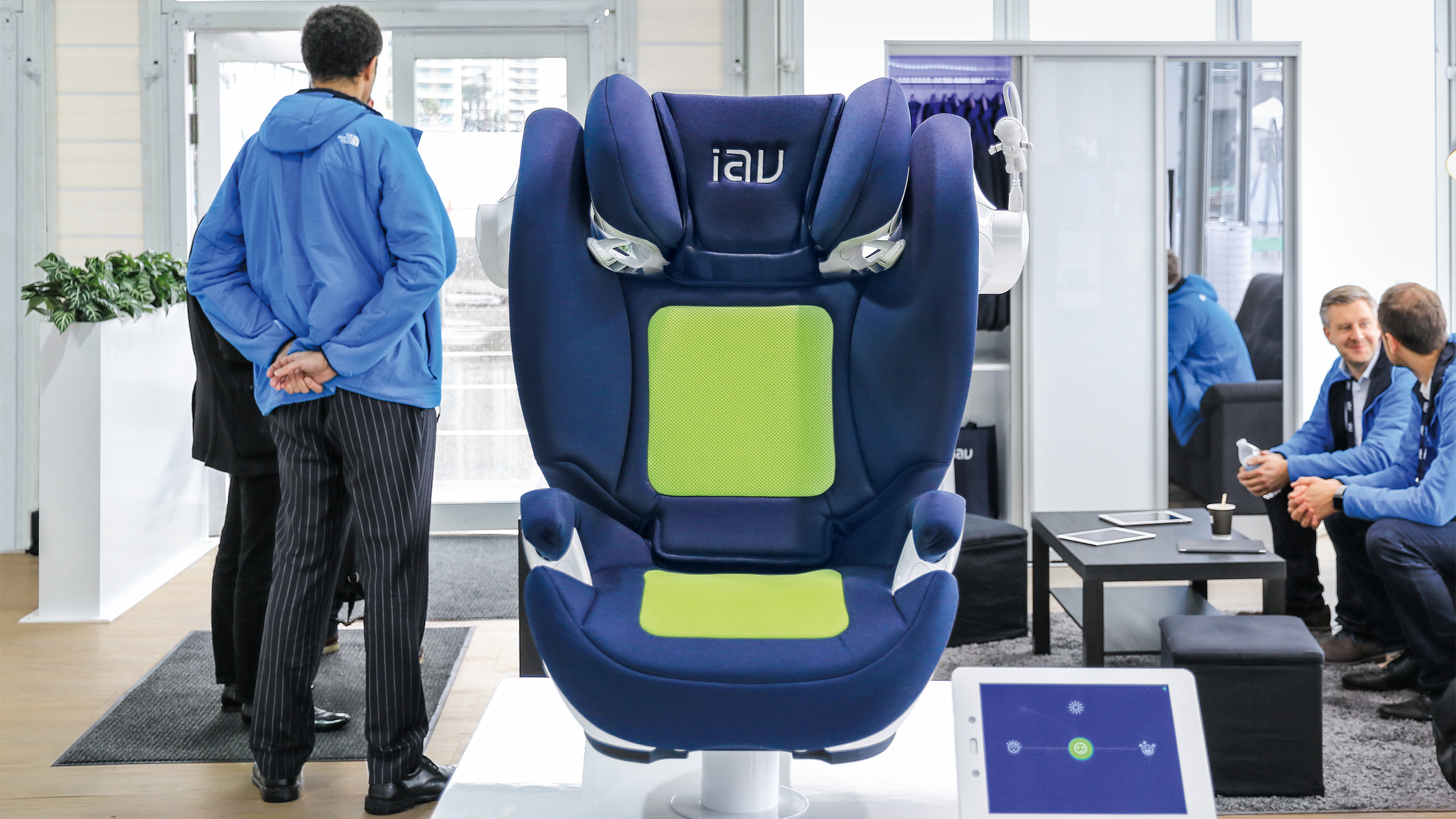Seamless Connection of Digital World and Personal Mobility
IAV at CES 2018 in Las Vegas – demonstration vehicles featuring all sorts of new functions
Biometric authentication, driving with the iPad, parking at the press of a button, tomorrow’s garage processes – and all that with maximum data security. This was the whole line-up shown by an IAV demo vehicle during CES 2018. IAV’s show booth gave visitors the chance to experience new functions first-hand on a test drive – an opportunity that went down exceptionally well with experts and media representatives.
The face as the key to the vehicle: it was with this innovation that visitors to IAV’s booth in Las Vegas set out on their journey into the future of mobility. Anyone wanting to get into the demo vehicle needed no mechanical door opener nor any wireless system. Using an app from IAV, all it took was a smartphone to obtain access to the vehicle. “Within just a few meters from the car, the cell phone recognizes by Bluetooth that its owner is approaching the vehicle”, explains Carsten Rinka, Executive Vice President for Sales at IAV. “Our app then opens a window which the driver needs to look into. If face recognition confirms that he or she is authorized to access the vehicle, it is opened.” Besides access authorization, other functions can also be linked to the authentication process.
“For instance, this includes personal suspension settings or seat position, selection of a favorite radio station or a feel-good temperature”, Rinka says. “The vehicle directly adjusts to the identified driver, providing added convenience from the very outset.” And not only that: depending on the user identified, the system can also grant different authorizations. It could, for example, give the mailman permission to open the trunk and deposit a parcel there. It could also provide a garage employee with access to all relevant areas of the vehicle without being able to start the engine. Biometric authentication is also highly interesting to car-sharing providers and insurance companies because it can limit and monitor the group of persons with access authorization.
IAV developed face recognition in cooperation with FaceTec, its partner from Summerlin, Nevada. “FaceTec provided the biometric software that we used as the basis for developing our app”, Rinka says. “We are expecting that this solution will completely replace the vehicle key in future.” This is the way many visitors saw it in Las Vegas too: countless test drives during CES showed biometric authentication to be an extremely reliable and user-friendly solution for access control – this was also reflected in the positive feedback from experts and media representatives.
Security gateway for maximum data security
As soon as show visitors sat down in the IAV demo vehicle and started out on their drive over the course, they were provided with mobile internet via LTE – and therefore countless options for entertainment or communication. Yet the link with the outside world presents the developers with a number of challenges. “We need digital protective measures to achieve five key goals: integrity, authenticity, availability, confidentiality and the non-repudiation of data”, Rinka says. “This applies to data communicated within the vehicle as well as from the vehicle to its surroundings.”
Maximum data security in the CES demo vehicle was provided by the universal IAV Dragoon control unit. This security gateway was used to connect the car with the Internet of Things as well as the IAV Cloud. Integrated Wi-Fi, including the latest security standards, guaranteed security in any communication between the vehicle and its driving environment.
Show visitors themselves were also able to launch a hacker attack on the vehicle from a tablet and watch live how the “Security Defense Center” recorded the attack. They were detected using Karamba Carwall, security software from IAV’s partner Karamba Security, an Israel company specializing in automotive security. Without this protective mechanism, the control unit would have been compromised and would have crashed.
The Security Defense Center combines three focal aspects in one. The Monitoring Center provides permanent vehicle monitoring. Security flaws can be detected and evaluated in the Analysis Center. Software updates can be exported over the air through the Development Center.
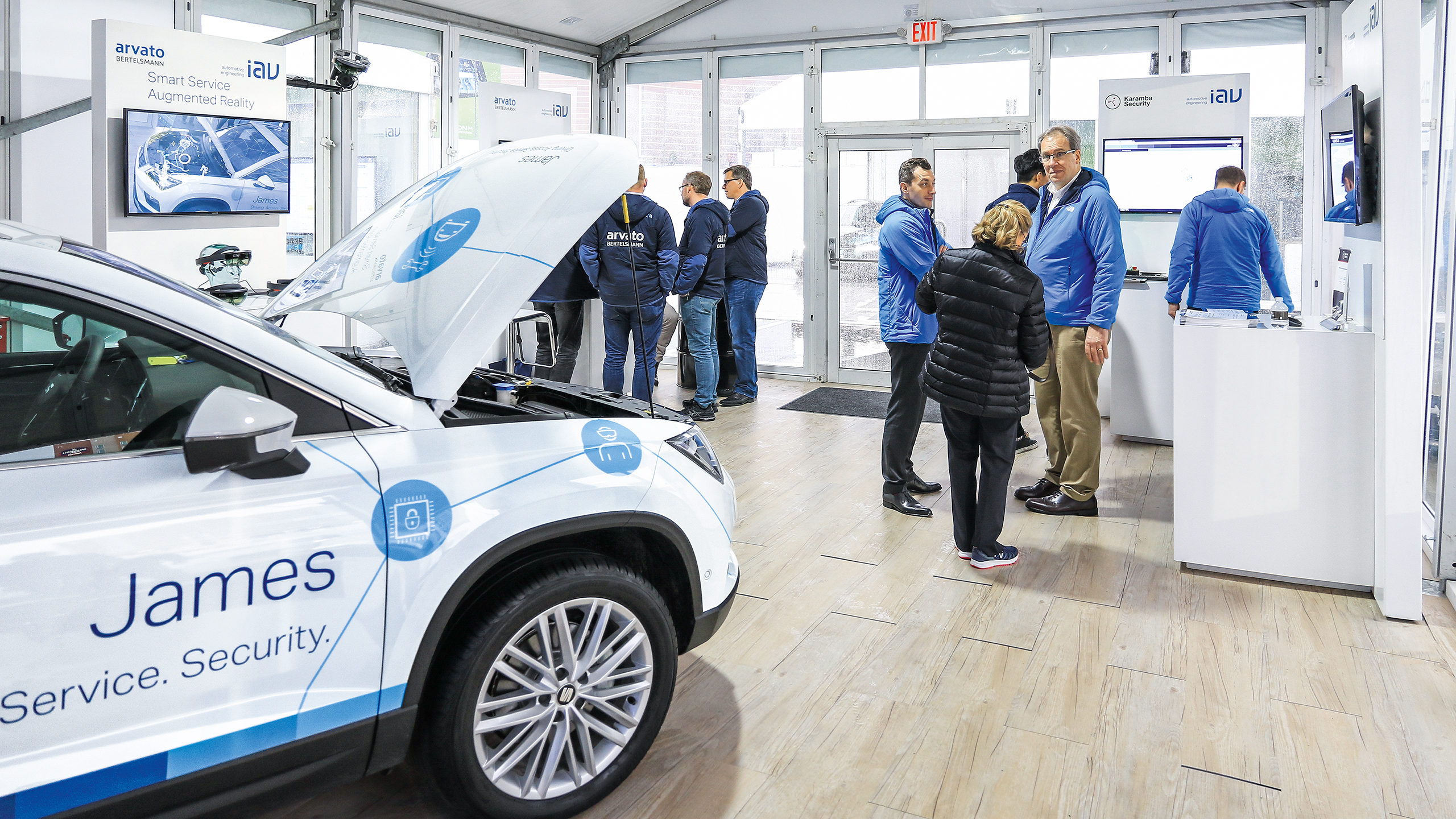
Viele neue Funktionen – von der biometrischen Authentifizierung über digitale Schutzmaßnahmen zur Datensicherheit bis zur Fernsteuerung via iPad – konnten die Messebesucher im IAV-Demonstrationsfahrzeug auf der CES erleben
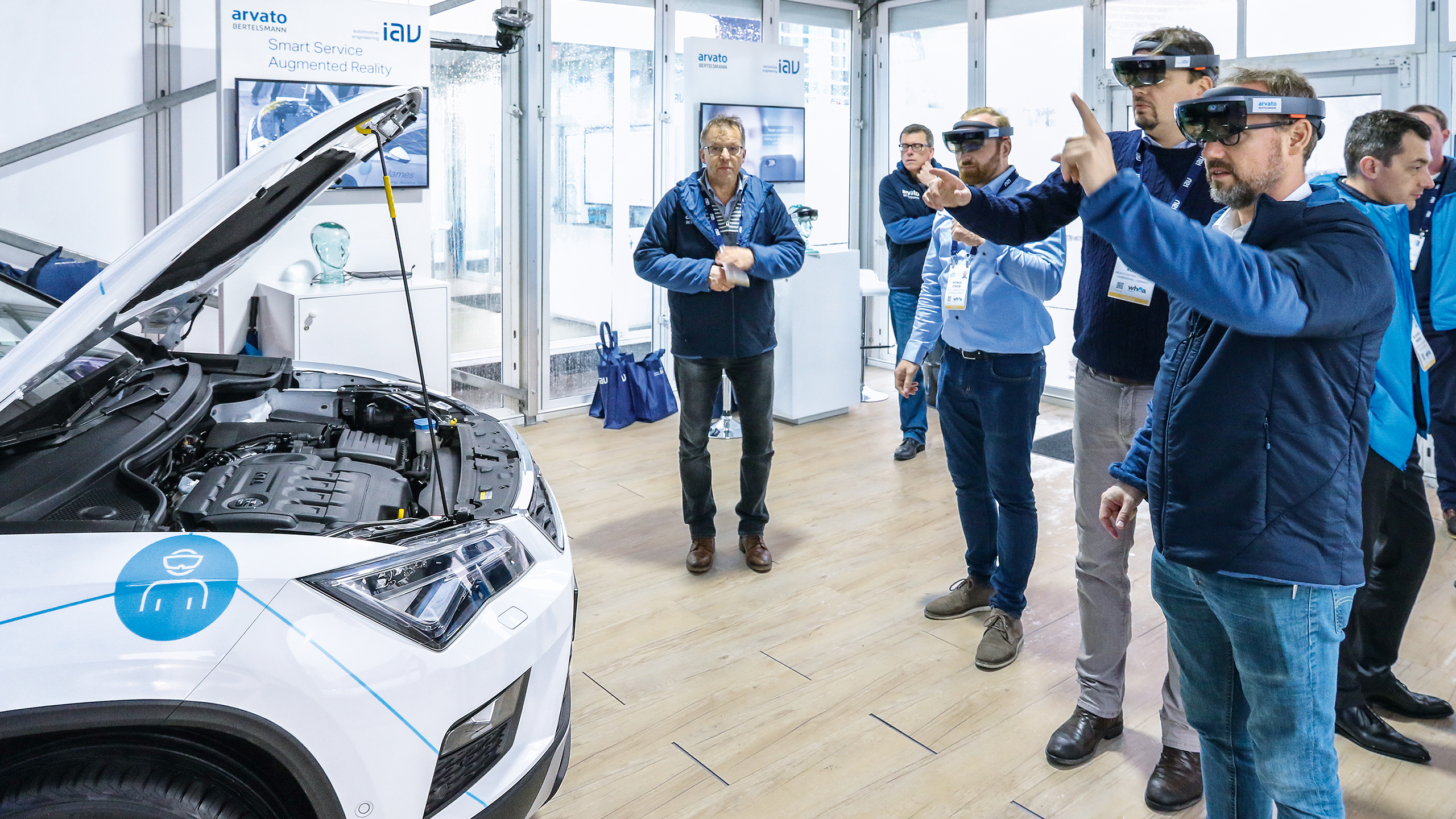
Vom Messebesucher zum Werkstattmitarbeiter: Gemeinsam mit Arvato zeigte IAV einen Augmented Reality-gestützten Reparaturvorgang, bei dem die Messebesucher zu Werkstattmitarbeitern wurden.
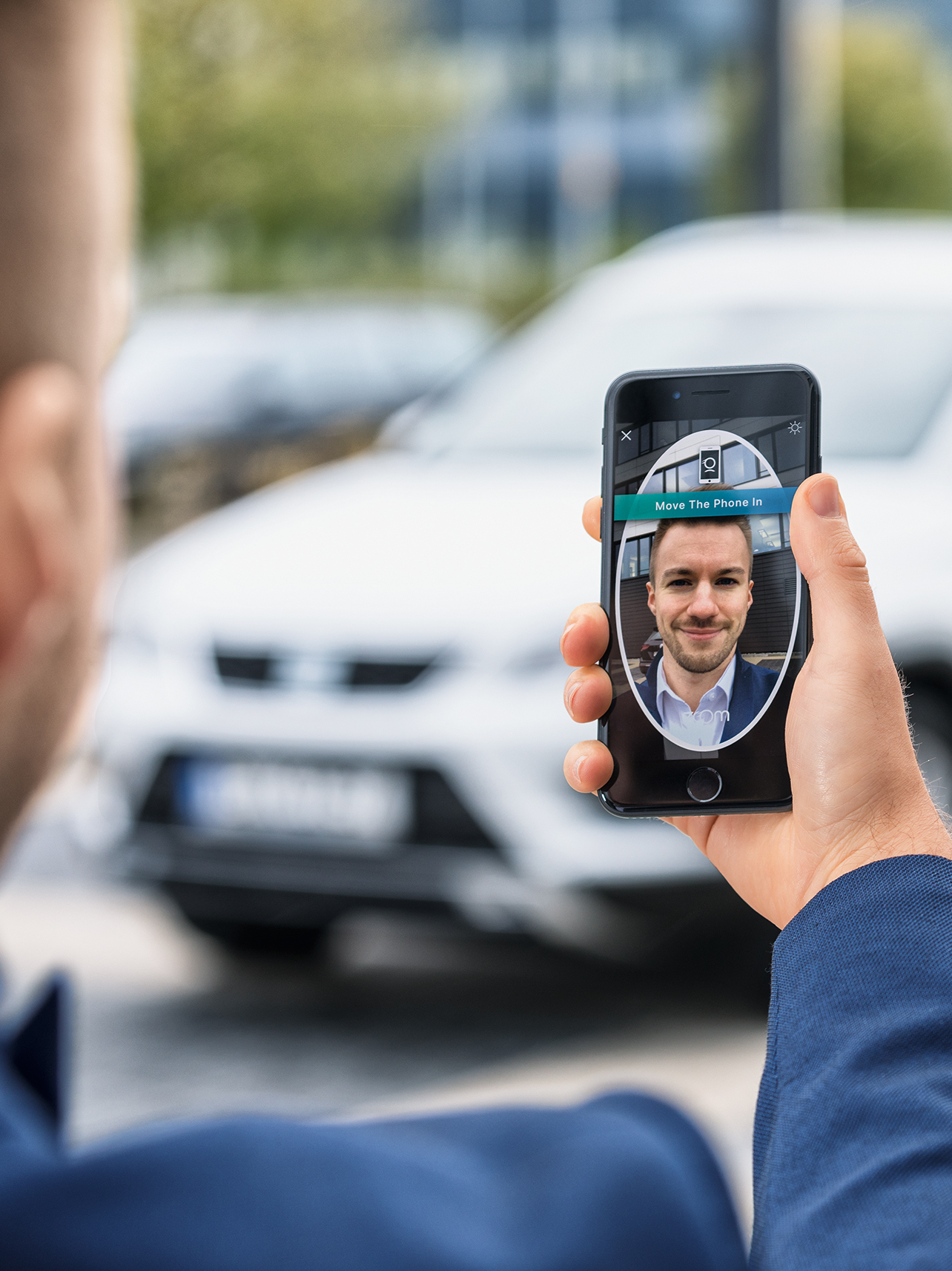
Die biometrische Authentifizierung von FaceTec und IAV ermöglicht eine zuverlässige und komfortable Zutrittskontrolle zum Fahrzeug
Remote control: steering and parking by iPad
One of the functions accessible via Wi-Fi and mobile terminal device was “remote control”. This makes it possible to control the vehicle remotely from an iPad. “The display shows the user various symbols: a brake pedal and accelerator pedal are depicted on the left, providing the capability of braking and accelerating with the left thumb”, Rinka explains. “The right-hand side shows a steering wheel that can be operated by the right thumb. Further, there are buttons for selecting the gear mode P, R, N or D. The vehicle position is shown on a map.”
At the end of the drive with the IAV demo vehicle another technology surprise was waiting. With one finger-tip on a tablet the vehicle was parking itself completely automatically. The astonished visitor just had to watch the vehicle doing its job.
But automatic parking did not mark the end of the tour. During the drive on the test circuit, the vehicle reported a problem with coolant level, making it necessary to visit an imitated repair shop at the show.
“The driver is constantly kept up to date through the cloud link between vehicle, garage and app”, says Rinka. Interactive, transparent repair processes are complemented by automatic service products based on predictive diagnostics and new technologies in the garage. Together with partner Arvato, a repair process assisted by augmented reality was demonstrated that enabled show visitors to slip into the role of garage staff. There will be further added service convenience: “In future, autonomous vehicles could take themselves to the garage and drive back to their owner once the repair has been carried out”, Rinka says.
For visitors to the show, the journey into tomorrow’s mobility was over after around 20 minutes. From opening the vehicle via face detection and secure mobile access to the internet through “drive by wire“ and fully automatic parking via iPad to driverless trips to the repair shop: IAV showed in Las Vegas how tomorrow’s vehicles will seamlessly connect the digital world with the personal mobility of their users.
The car will become flexible and adjust to the individual
Why shouldn’t it be possible to add new functions to a vehicle in future in the same way as we can to smartphones? And why do vehicle occupants need to reset their air-conditioning preferences every time they set off on a new journey? Questions IAV gave a clear answer to at CES: a demo vehicle with IAV’s “Up-to-date. Up to You.” as well as intelligent air-con control for personalized comfort showed that flexibility and individualization may soon be finding their way into volume production.
Now, virtually all of today’s vehicle models communicate with the internet – yet many users are missing cherished functions they have long taken for granted from other devices for the Internet of Things (IoT). This includes regular updates and bug fixes, function upgrades, adjustments to suit individual needs and seamless integration into personal digital eco-systems.
Flexibility and individualization
This is why IAV developed “Up-to-date. Up to You.” and presented it at CES in Las Vegas. In an IAV demo vehicle, show visitors were able to experience how modern vehicle architectures can be further individualized and provided with greater flexibility. Based on appropriate end-to-end functions, such as driving profile selection, IAV illustrated how service-focused architectures can be used to realize regular updates and bug fixes, function upgrades over the life cycle, adjustments to individual needs and integration into the user-centered digital eco-system.
Providing a high degree of flexibility demands service-oriented architectures (SOA). “They are based on open standards – with the aim of boosting flexibility and reducing development complexity at the interfaces”, Rinka explains. “Although the close link prevailing between function and hardware architecture within vehicles provides a very efficient basis for implementing functions, it allows little scope for flexibility.” Future architectures will need to arrive at a trade-off between both requirements and deliver an all-encompassing answer. “From experience with conventional and service-oriented approaches, we develop architecture concepts for integrating automotive and IT in the Internet of Things”, Rinka says.
AI identifies personal wishes
The user’s wish for a personalized driving experience can also be met with methods from the field of artificial intelligence. For example, analyzing user behavior behind the wheel can provide a further level of personalization. The vehicle anticipates the user’s wish and suggests specific actions – e.g. changing the driving profile setting – or even doing it by it- self.
The CES demo vehicle showed visitors a further way of personalizing their driving experience. Before setting out, they were able to select a customized “comfort profile” that was saved in the cloud, making it permanently available not only at any specific moment but also for different vehicles the user might drive. As the next step, a planned route was selected on an iPad. Booth visitors were then provided with clothing recommendations and welcomed in the vehicle with their preferred “feel-good atmosphere”.
Long-term, this is how IAV wants to eliminate the bother of having to control the air-conditioning system. Once the system has saved the preferences of a particular user and, in a self-teaching period in which it continues to adjust to any new information added by the user, it then automatically provides the perfect passenger compartment climate. This is also additionally done using weather reports and by taking account of the clothing vehicle occupants are wearing.
Positive response at the show booth
“The many visitors to our show booth were impressed by the new options for personalizing the vehicle and making it more flexible”, Rinka says. “What visitors particularly liked was the increasing integration of the vehicle into the digital eco-system of users, finally enabling the seamless combination of automotive and IT technologies.”
